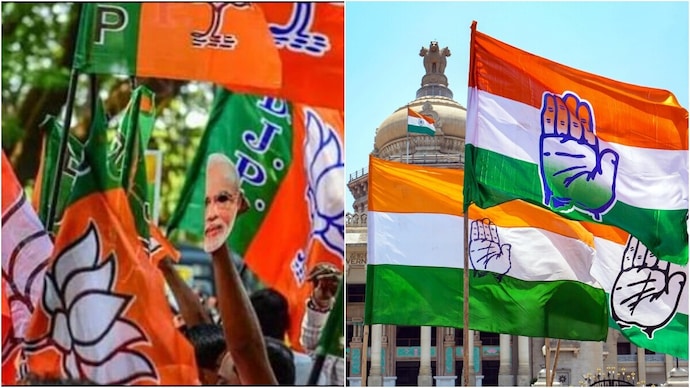
A tale of two parties: What shifting victory margins mean for BJP and Congress
How have the victory margins of the BJP and Congress changed and what does this say about the political climate in India?

By Dipu Rai: Two major parties have primarily dominated India's political landscape over the years: the Bharatiya Janata Party (BJP) and the Indian National Congress (INC). The former, of course, has dominated the Lok Sabha in the last two general elections. But how have they performed over time? More specifically, how have their victory margins changed? And what does this say about the political climate in India?
- In the last 15 general elections, the most common victory margin range was 10-20 per cent
- In those Lok Sabha elections, about 23 per cent of the total seats (1,820 out of 8,011) had victory margins of up to five per cent
- From 1962 to 2019, the Congress won 579 seats while the BJP won 371 seats (from 1984), with a victory margin of up to five per cent
- In the last three elections (2009, 2014, and 2019), the BJP defeated the Congress party in 62 constituencies in a close fight. At the same time, Congress defeated BJP on 55 seats
Why it matters
Victory margins in Lok Sabha elections reveal a dynamic electoral landscape with varying degrees of competitiveness and decisive victories. While the most common victory margin range has been between 10 and 20 per cent, there have been historical shifts with wider victory margins in recent elections.
Data shows a significant portion of seats were won with a small victory margin (five per cent or less) in the last seven decades. Many constituencies saw close contests, and a small swing in voter preference could have influenced the outcomes.
In numbers
In the last 15 Lok Sabha elections, the most common victory margin range was between 10 and 20 per cent. However, during the 1971 and 1977 general elections, the most common victory margin range was higher, between 30 and 50 per cent. These elections witnessed more decisive victories for winning candidates.
Election data from 1962 to the present shows intriguing shifts in victory margins. Pre-1989, few candidates won within the five per cent margin, but post-1989, this trend changed significantly. Between 1962 and 2019, the Congress secured victory in 579 seats, while the BJP won 371 seats (from 1984 onwards) with up to five per cent victory margins.
In 1996, 1998, 1999, and 2009, the Lok Sabha polls saw a remarkable trend, with the most common victory margin range being less than five per cent. In the last fifteen Lok Sabha elections, approximately 23 per cent of the total seats had a small victory margin of five per cent or less. The trend highlights the significance of narrow margins in determining the outcome of several constituencies.
In the last three elections (2009, 2014, and 2019), the BJP emerged victorious in 62 constituencies in a close fight against the Congress party. Conversely, the Congress defeated the BJP in 55 seats, showcasing a competitive political landscape in recent times.
The 60s versus the 90s
In the 60s, the Congress party had a substantial proportion of their victories in the less-than-five-per-cent margin bracket, indicating closely fought battles in those elections. The BJP was founded in 1980 and first participated in the general elections in 1984. The 1990s marked a crucial turning point in Indian politics. BJP victory margins moved from the 10-20 per cent bracket to the 20-30 per cent bracket, indicating its rising popularity. In contrast, the INC saw a more evenly spread distribution across different margin brackets, reflecting varied support and competition.
The 2000s and beyond
In recent decades, the BJP maintained its upward trajectory in Indian politics. Though still limited, the party's victories in the above 50 per cent margin bracket represent a notable development. On the other hand, the Congress party experienced a relative decline in the number of seats won, with a higher proportion of victories falling within the lower margin brackets.
The verdict
The changing victory margins of the BJP and Congress over time reflect significant political shifts and evolving voter preferences. The early dominance of the Congress has been challenged by the rise of the BJP in recent decades. The increasing victory margins for the BJP signify growing voter confidence, while the Congress party's lower margins indicate tougher electoral battles to come.






